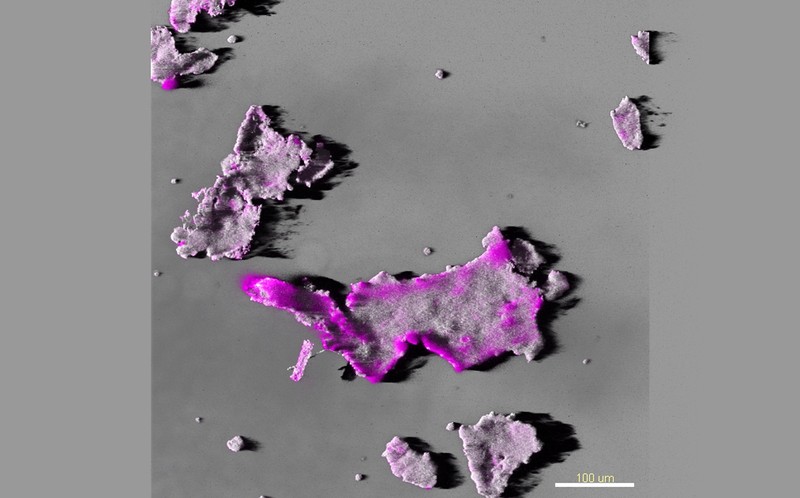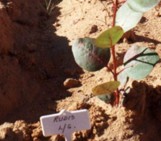
Gema Bárcenas-Moreno
University of Seville, Sevilla, Spain
Currently, the complexity of soil microbial ecology on soil systems is a hot topic in the environmental sciences, since the scientific community has achieved a deep knowledge of the relevance of microorganisms in soil processes. After several decades of study of the effects of wildfires on soils, one of the main conclusions is that soil microbial populations are very sensitive to fire, which allows us to use them as a tool to assess the impact of fire on ecosystems.

Polysaccharides distribution due to microbial colonization in a soil microaggregate. Credit: Imaggeo/María Hernández-Soriano. Click the image for more information.
Usually, soil is partly or completely sterilized after a fire, and it constitutes a new environment that organisms must recolonize and grow in. This is the reason why burning is followed immediately by a decrease of microbial abundance (which may be easily detected by assessment of microbial biomass or plate counting methods). Nevertheless, this decrease of microbial abundance in the post-fire is not always combined with a decrease in microbial activity or even bacterial growth (which may be related to increased concentrations of soluble organic carbon). Therefore, this is one of the many reasons that lead soil microbiologists to consider new parameters in their investigations. But the abundance and microbial activity are highly variable parameters that normally support deep seasonal changes under field conditions, even more intense than those caused by fire in most cases. This makes it necessary to analyse the composition of the microbial community in the post-fire to assess the real impact of the direct and indirect effects of fire on soil microorganisms and the main consequences for ecosystems.
It is possible to study changes in both the microbial community structure and functions through new methods such as phospholipids fatty acid analysis (PLFA), community DNA by restriction fragment length polymorphism (RFLP) or community level substrate utilization (CLSU). Each of these tests gives us important and abundant information, although it is difficult to interpret correctly.
With these suggestions, I do not pretend to discourage young soil microbiologists, but encourage them to find new targets. Currently, there are several lines of study of microbial soil responses after fire, focused on the evaluation of possible alterations of microbial functions and the impact on ecosystems. Other research groups have focused on searching for bio-indicators to monitor the recovery of fire-affected ecosystems. There are even several recent studies focused on the isolation and characterization of species with special ability to degrade recalcitrant or toxic compounds and so survive in burned soils.
At present, there are many gaps in the knowledge of microbial processes in fire-affected soils, but what really matters is to use the accumulated knowledge to ask the right questions.
This post has been simultaneusly published in G-Soil.


Pingback: Fire and soil microorganisms: where should we focus on? | G-Soil